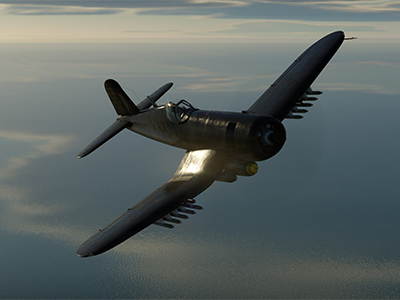
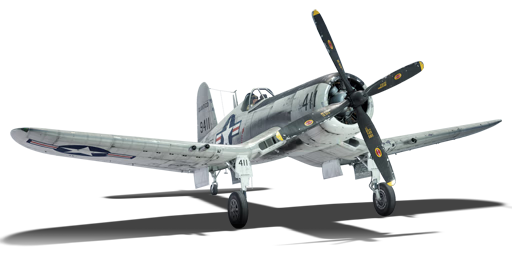

The AU-1 was a variant of the F4U Corsair developed from the F4U-5, and was originally designated as the F4U-6 but was renamed to AU-1. It was designed as a dedicated ground attack aircraft, unlike all the previous Corsairs which were designed as fighters. To fit that role the engine was optimized for low-altitude flight, additional armour was fitted, and the AU-1 had increased suspended armament capacity. The United States Marine Corps utilized the AU-1 in Korea starting in 1952, saw service in the Naval reserves from 1954 to early 1956 before it was officially retired in 1957.
Introduced during Update 1.97 "Viking Fury" as a reward for the 2020 "Space Race" event, the AU-1 is like a souped-up version of the Corsair for ground attack enthusiasts. It can carry a much larger payload than the typical Corsair due to additional pylons that can be installed under the airframe and wings. The AU-1 can still be used as a fighter in opportunistic moments against the enemy if they are distracted, but the overall weight penalty from the modifications make the AU-1 poor for dogfights.
flaps
flaps
flaps
brake
| Belt | Belt filling | Armor penetration (mm) at a distance: | |||||
|---|---|---|---|---|---|---|---|
| 10 m | 100 m | 500 m | 1000 m | 1500 m | 2000 m | ||
| HEF-I/AP-T | 36 | 33 | 23 | 15 | 9 | 6 | |
| AP-T/AP-T/HEF-I/HEF-I | 36 | 33 | 23 | 15 | 9 | 6 | |
| HEF-I/HEF-I/HEF-I/AP-T | 36 | 33 | 23 | 15 | 9 | 6 | |
| AP-T/AP-T/AP-T/HEF-I | 36 | 33 | 23 | 15 | 9 | 6 | |
| HEF-I | 5 | 4 | 3 | 2 | 2 | 2 | |
| Belt | Belt filling | Armor penetration (mm) at a distance: | |||||
|---|---|---|---|---|---|---|---|
| 10 m | 100 m | 500 m | 1000 m | 1500 m | 2000 m | ||
| HEF-I/AP-T | 36 | 33 | 23 | 15 | 9 | 6 | |
| AP-T/AP-T/HEF-I/HEF-I | 36 | 33 | 23 | 15 | 9 | 6 | |
| HEF-I/HEF-I/HEF-I/AP-T | 36 | 33 | 23 | 15 | 9 | 6 | |
| AP-T/AP-T/AP-T/HEF-I | 36 | 33 | 23 | 15 | 9 | 6 | |
| HEF-I | 5 | 4 | 3 | 2 | 2 | 2 | |
| Name | Weight | Slot | ||||||||||||
|---|---|---|---|---|---|---|---|---|---|---|---|---|---|---|
| 62.8 kg |  |  |  |  |  |  |  |  |  |  | ||||
| 117.9 kg |  |  |  |  |  |  |  |  |  |  | ||||
| 242.6 kg |  |  |  |  |  |  |  |  |  | |||||
| 534.2 kg | 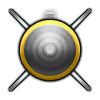 |  |  | |||||||||||
| 500.8 kg |  |  |  | |||||||||||
| 721.2 kg | 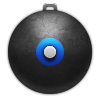 |  |  | |||||||||||
| 996.3 kg | 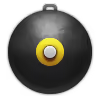 | |||||||||||||







 2 x (110 / 185 / 600) %
2 x (110 / 185 / 600) % 
 2 x 172 %
2 x 172 % 

Flight performance | |
|---|---|
Survivability |
|---|
Weaponry | ||
|---|---|---|
